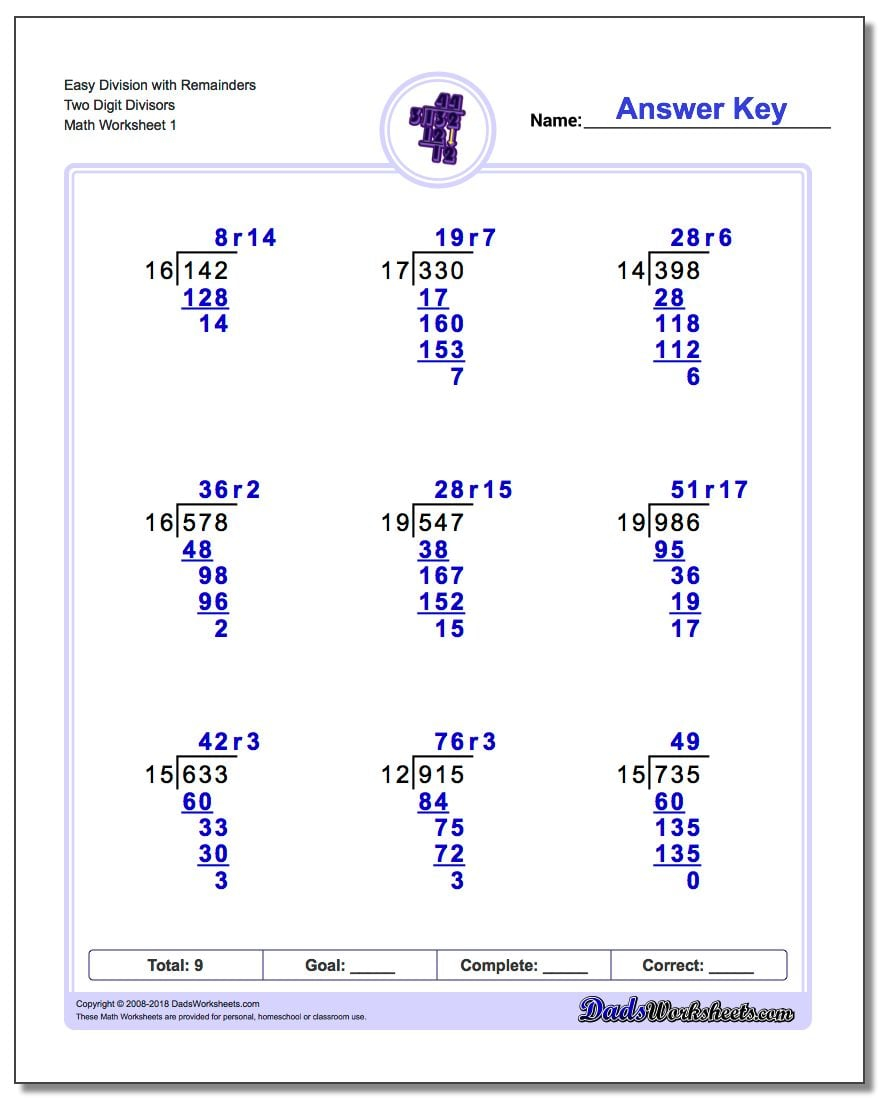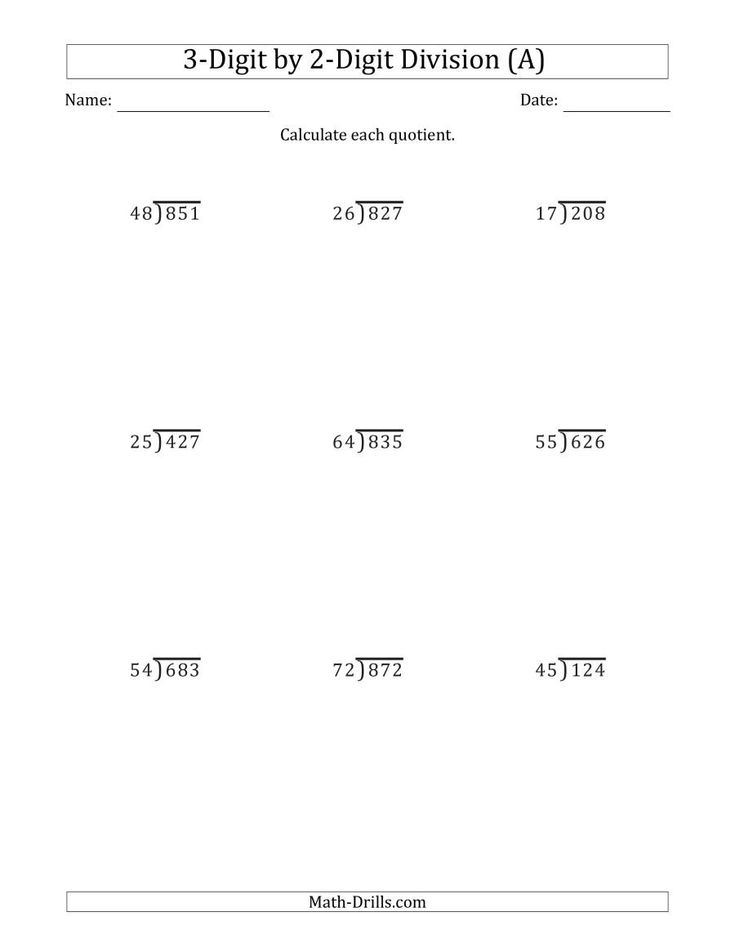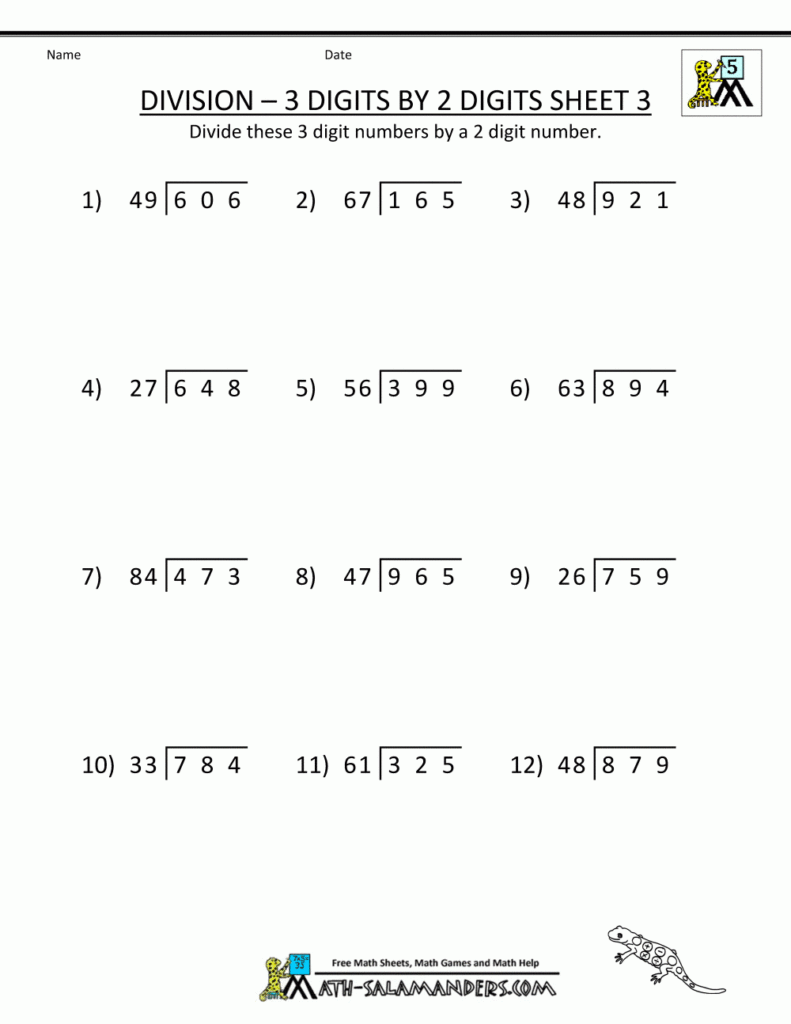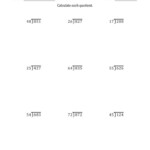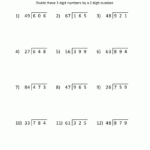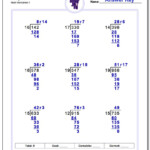Long Division With 2-digit Divisors Worksheet – Worksheets for division are a fantastic way to practice math concepts. They’re an excellent way to practice math concepts as well as prepare yourself for the arithmetic test. A wide range of worksheet formats are available that include whole numbers as well as decimals.
entire numbers
A worksheet that focuses on division of whole numbers could help young children to grasp the fundamental idea behind mathematical operations that apply to whole numbers. Divide whole numbers worksheets are helpful for homework, helping to develop division abilities as well as practice them to assist in understanding. These worksheets include images and real-world examples to demonstrate the subject.
Division worksheets come in a variety of formats. Worksheets with a lot of digits and long divisions are among them. Multi-digit integers have to be divided by their divisors. Then, they calculate the quotient as well as the remainder. Long division worksheets as a standard method.
There are worksheets that divide whole numbers into fractions, as well as worksheets that divide numbers in traditional ways. This is a great method to improve pupils’ ability to think and make it easy for them to grasp.
Rule of Divisibility
Divide worksheets with divisibility rules can help kids better understand the concept. They are able to keep kids interested in their learning process and assist them with solving division issues. These worksheets can also be used to aid children in remembering and understanding information faster.
Children are asked to mark the numbers that can be divided by the numbers specified on a worksheet about divisibility rules. These worksheets are designed to assist children improve their decision-making skills as well as fine motor skills. These worksheets assist children to track their education and locate areas of their knowledge that need to be filled in.
To determine if a particular number is able to be divided by its numbers, you have to divide it. The number must then be divided by its total digits. This should also include the last digit.
Fractional division
It’s a great way to teach fractions by using worksheets about splitting fractions. This practice could also be used to prepare students for algebra in the later grades.
Students who have trouble with fractional division typically have to deal with the issue at school. The issue is how complicated it can be to grasp. Children can be able to avoid confusion by making use of worksheets for fraction division. Students can use them to check their answers. These worksheets can be used to make students feel at home in class.
You can use word problems, images or diagrams to help you divide fractions. You can also practice writing fractions using mixed numbers with them. There are several difficulty levels for these worksheets. They are designed for children who are in grades ranging from third to sixth.
Decimal division
Dividing decimals and whole numbers are identical operations.The one difference is the absence of a rest in decimal division. Divide a Decimal the decimal position is shifted to one side. It is possible to round upwards or downwards based on the number of digits that follows the decimal mark.
Before you can divide the decimal, it is important to establish the quotient. Decimal quotient is defined as the sum of the divided dividend and divisor’s product. It can be a multiple of one integer, a multiple 10, or even 100.
A decimal quotient in most instances is rounded to a predetermined amount of decimal places. A trailing zero is used for this. This is due to the fact that the dividend has a value of 0.4 and that divisors have an amount of 4.88 and the division 48.8 by 4 could be classified as an decimal subdivision.
Use power of 10 to split massive numbers.
The power of ten is a basic concept that can be utilized to divide huge numbers. It is necessary to alter the decimal point if you are splitting a decimal or a complete number.
The decimal point has to be moved by as many places when dividing a large number as there are zeros within the power of ten. In the end, the value rises and the initial value decreases. The decimal point moves to the right when it is smaller than one. If it is larger it moves to the left. If it’s less than one, the exponent will reduce in proportion to the movement.
You must subtract the exponents within the divisor of the exponents. The scientific explanation for this step is available here.
